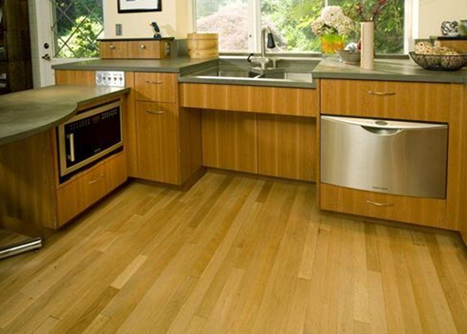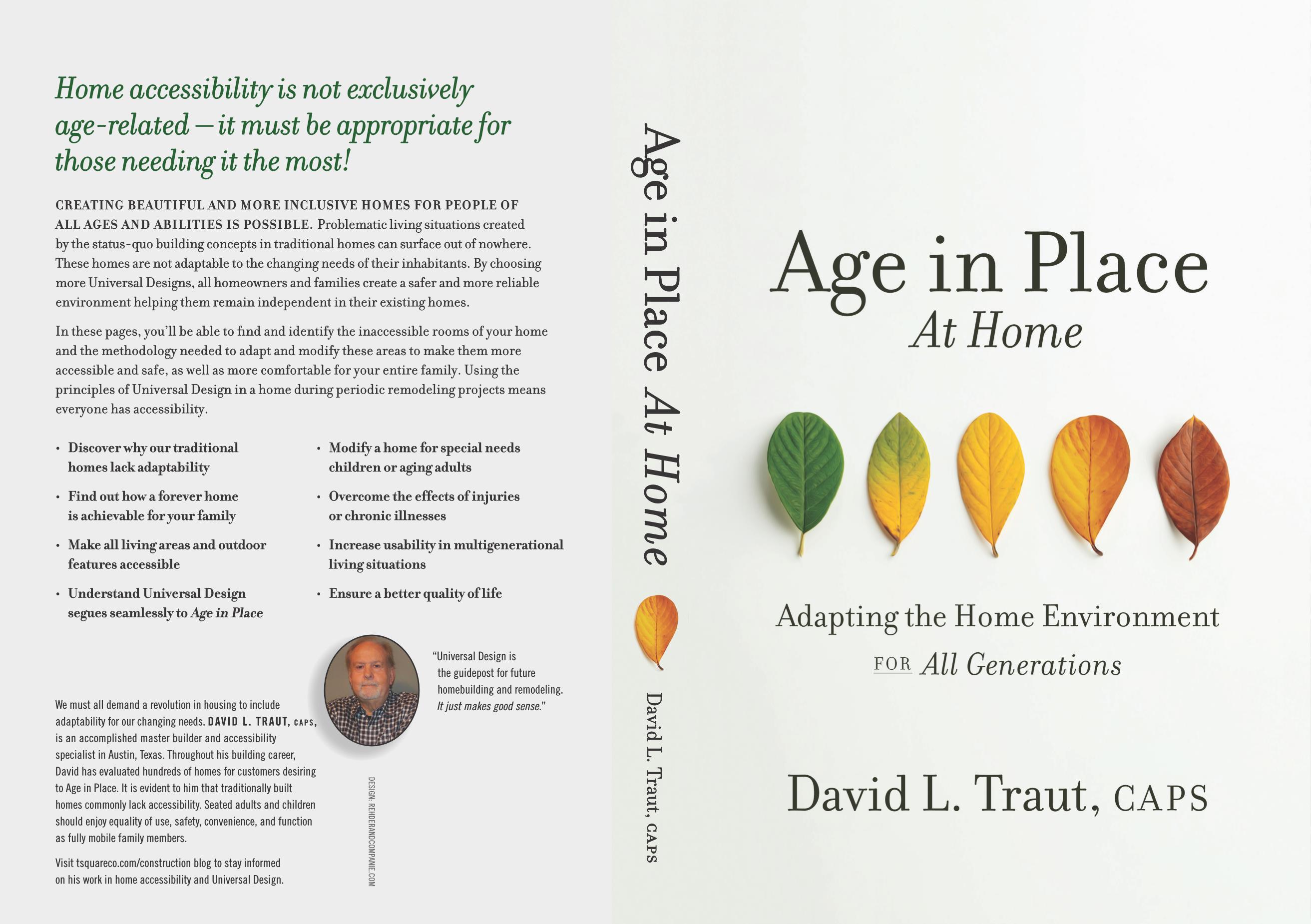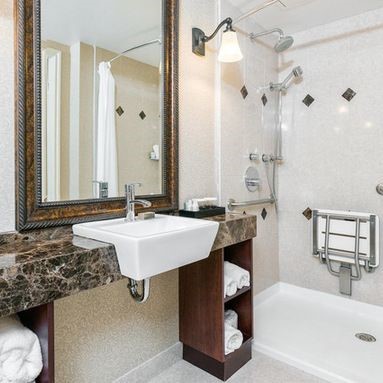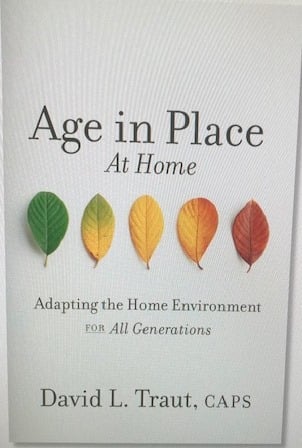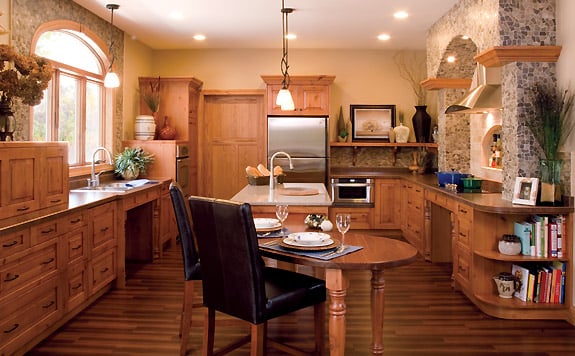If you are a senior or considering moving in an elderly parent into your home, you might find this information useful while pondering the subject to move forward.
The Aging in Place market in the US today is constantly influenced by the increasing size of the senior population, the desire to remain in one's home, a constantly increasing cultural diversity, and our aging and inaccessible housing stock with it's reduced affordability. Let's face it, accessible homes are needed by all of us at some time in our lives. This is true whether it's for ourselves, a family member, or a guest. Each individual with similar impairments describes his or her limitations differently. The blind don't experience their world the same as a person with deafness. The need is certainly not driven by age but is a result of life's experience. Any family living with disability among any of it's generations within it's group will always benefit from additional accessibility. This will in turn increase safety and independence for all involved as they go through life.
Actively searching for senior living solutions, the aging population is made up of two prominent age groups formed by the age 65 and over population and the baby boomers. The baby boomers were born between 1946 and 1965 as a result of WW II. Together these two groups own over 48% of all the US home inventory today. The desire to remain in one's home is driven by social attachments via a network of neighbors, friends, and family. Our cultural diversity assures that the same Aging in Place solutions cannot work across the board for all individuals, just as an individual's ability to live independently varies from person to person. With the constantly aging housing inventory, costs can be a major barrier in home modification for many residents. A catch 22 situation arises once you consider the reduced affordability of another home versus the one presently occupied by seniors. In this case the homeowner must use the equity that has accrued in their home's value in order to make the modifications required to safely move forward. Obviously, in the long run, it's cheaper to remodel an existing home using accrued assets than it is to buy a new home in today's inflated market only to endure closing costs, moving costs and the associated stress.
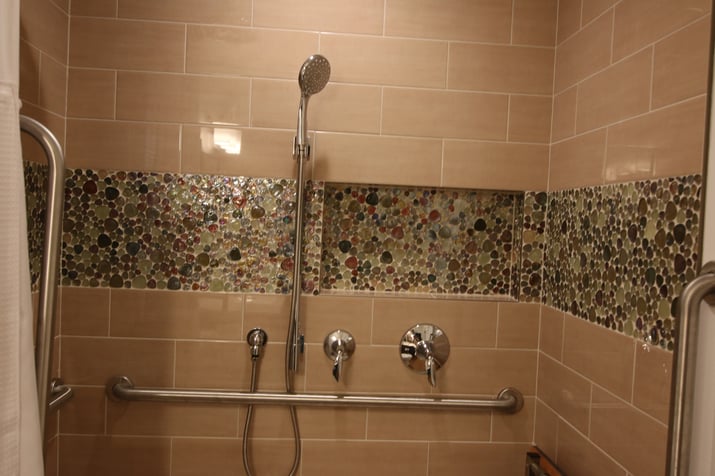
Some people confuse Aging in Place with Universal Design. Both are methods to increase home accessibility but Aging in Place strictly deals with an existing home, and is applied only when needed. Aging in Place implies modifying any home for it's occupants as a result of physical changes to ensure that the inhabitants can safely remain living in the home for as long as possible. Thus, it represents a reactive approach as a solution for providing home accessibility to the unprepared and procrastinating occupants. This time will expire once the senior homeowners require assisting medically trained help for ensuring their personal safety in a nursing home or an assisted living environment. In comparison, Universal Design offers choices to all home residents, no matter their age, size, or physical abilities. It can become part of any home at any time so all the occupants can enjoy the positive effects longer. Once undertaken by a proactive homeowner, the universal process begins with a design and then the construction begins. This process makes way for the home's comfort, safety, and usability to be enhanced. When Universal Design is incorporated into remodeling or new builds, these homes can accommodate the changing needs of their owners without further alterations. Over time, increased accessibility is there when it is required without disruption or calling attention to any family member.
For unprepared seniors, the demands of their home environment might eventually exceed their capacities forcing the inhabitants to become excluded from a room or even the entire home. In truth, physical limitations affect many more people than the daily users of walkers and wheelchairs. Many members of our life-experienced or senior society have significant problems safely dealing with their home environment due to today's conventional building standards. These status-quo building methods conflict with most people's accessibility, while the industry has routinely created homes full of architectural barriers. Individual strength, range of motion, movement, manual dexterity, balance, and coordination evolve over time as we become more life-experienced. The number one safety hazard in a home for seniors is negotiating level changes--steps at the entry, stairs between floors, and curbs to step over when entering the shower. Eliminating level changes is very difficult in existing homes and almost impossible to do aesthetically without considerable compromises, unless there is a major renovation. Sadly, the end result is that most homeowners decide to sell the house facing this situation rather than make the modifications. Fortunately, most traditional homes are capable of being modified.
Any accessibility design for seniors should always be performed by a CAPS certified builder or remodeler to provide a professional and safe path forward for seniors. This is the only way that you can be assured that the home modifications are the right choices to satisfy your needs. There is no need to waste money only to find out that the wrong alterations were done by an inexperienced and unqualified remodeling company. Modifications to bathrooms and kitchens, the two most used rooms in a home, must take everything about a persons personal behavior into consideration. Bathroom modifications typically include custom tub to shower conversions, a custom walk in shower, an ADA-compliant toilet, or an accessible roll-under vanity. These are all great ways to make the bathroom safer and more accessible. Other bathroom concerns involve storage cabinetry and door opening widths. When it comes to the kitchen, ADA-compliant kitchen cabinets including roll-under cooktops, sinks, and food prep areas are important. Accessible storage for food and cooking items is needed along with adaptable multi-level cabinet working surfaces. All kitchen ADA-compliant appliances should be installed so a person using a wheelchair has access. Therefore, each appliance has associated clear floor space for approach and maneuvering. Remember, if the layout works well for the wheelchair user, it works for everyone. In general, a senior's home should be free of clutter, and every adequate room should have ample clear floor space for approaching certain items. Every area of the home is accessible without involving architectural barriers. But who do you contact to be sure you are getting the accessibility you desire?
The National Association of Home Builders, in partnership with the AARP and Home Innovation Research Labs, created the CAPS program, which includes training and education on the technical, business management and customer service skills essential to compete in the fastest growing segment of the residential remodeling industry--home modifications for aging in place. David L. Traut, CAPS owner of T-Square Company in Austin, Texas is one of the select group of professionals nationwide to earn the Certified Aging-In-Place Specialist (CAPS) designation, identifying him as a home remodeler and builder with the skills and knowledge necessary to remodel or modify a home to meet the unique needs of the older population, disabled owners or their visitors. David has recently published a book called "Age in Place at Home: Adapting the Home Environment for All Generations". It is available on Amazon.
For additional information about the CAPS program, visit nahb.org/CAPS. For more information about T-Square Company, visit www.tsquareco.com or call 512-444-0097.
The building world must work in unison to be sure the entire living environment meets basic needs in addition to affordability and structural integrity for the consumer and home owner. This includes both the home and the components within the home being accessible to all inhabitants. Privacy, sense of belonging, sense of control, and the sense of safety and security make up the quality of life for any home and should be considered for any design.





